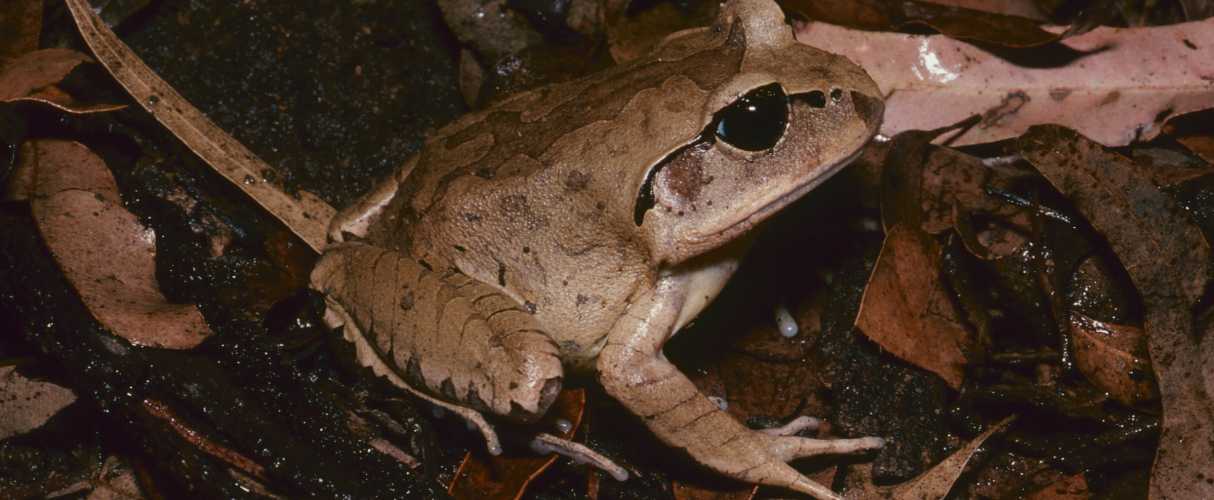The great barred frog is a large species, growing 8 - 11cm long.
It’s tanned brown body has distinct markings - thin black stripes/bars on the legs and two thin black lines which begin at the snout and pass over the large, raised eyes stopping behind the tympanum (eardrum).
This species lives in wet schlerophyll, tropical, subtropical and Antarctic beech rainforests along the Australian east coast. It burrows into leaf litter or loose soil during the day to avoid predators and keep moist. At night the great barred frog emerges to hunt invertebrates.
Their loud call “waark-waark-waark” is followed by a softer, slow trill “bwaaark-bwaaark”.
In spring and summer the great barred frog breeds in running streams and ponds. The male and female enter the water together and after mating the female flicks the fertilised eggs onto the bank away from aquatic predators. At the next rain, the eggs are washed back into the stream or pond where they become tadpoles.
This large frog has an abundant population at Mary Cairncross but may be hiding and hard to spot when you visit.
Great barred frog call
Call of great barred frog, Mixophyes fasciolatus recorded at Mary Cairncross Scenic Reserve.
